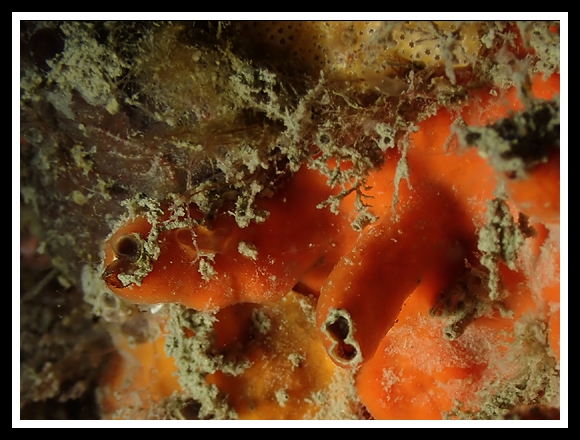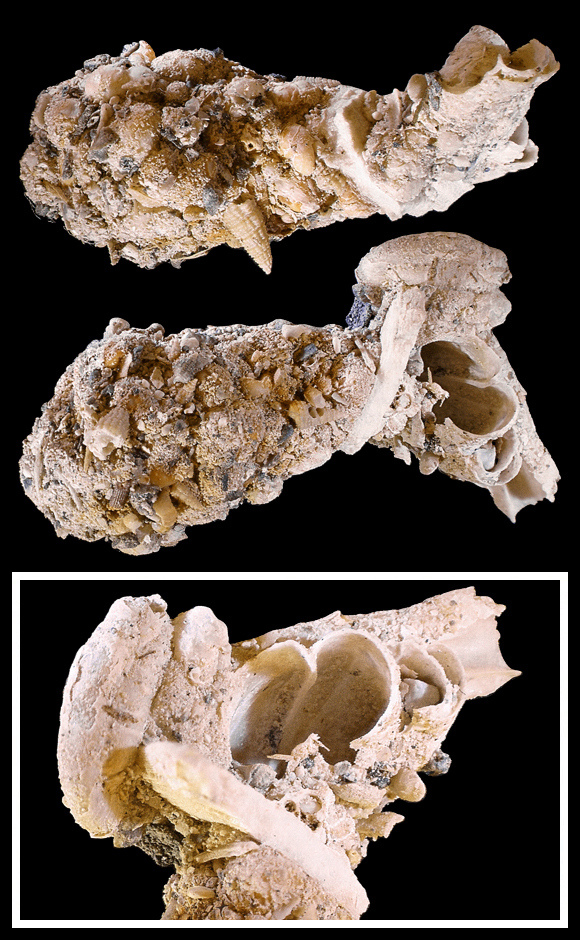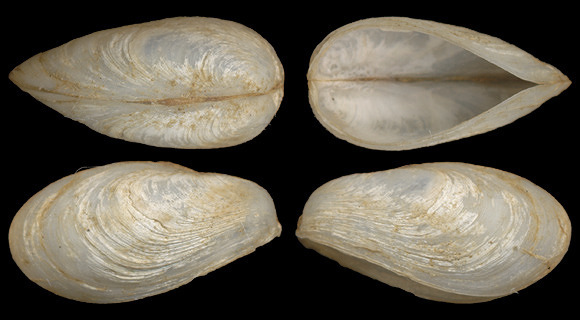
W. Ireland & Channel Islands to Angola & offshore islands, Mediterranean & Black Sea. Lives in tubular structures made of cemented debris, or in sedimentary rocks, large shells, coralligen, from subtidal grounds to circa 50m deep. Eight-shaped orifices.
Original taxon: Mya dubia.
30-40m deep, Málaga, Andalucia, S. Spain. 10mm.
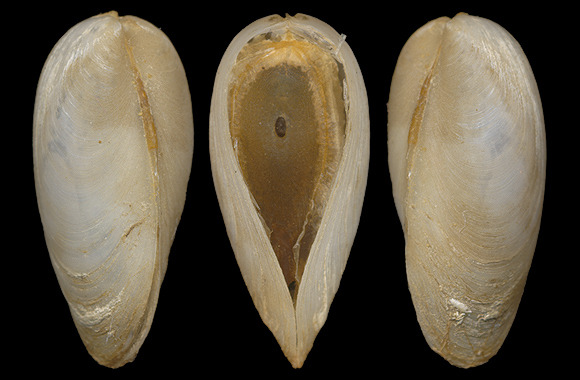
« Gastrochaena pholadia: this shell is enclosed in a testaceous, irregular, claviform tube, situate at its broader extremity; it is open and attenuated anteriorly, with an oblong, bilobate aperture, which is nearly subdivided by a projecting septum that does not quite reach across the opening; these serve for the passage of the two tubes of the animal; the posterior end of the tube is closed. This club-shaped tube is found either within the perforated cavities of rocks, or in old shells or corals, the testaceous tube always protruding beyond the surface. […] an extremely local species. » – T. Brown: Illustrations of the recent conchology of Great Britain and Ireland, London 1844, via BHL.
6m deep, Mali Lošinj, Lošinj island, Primorje-Gorski Kotar, Croatia. 15mm.
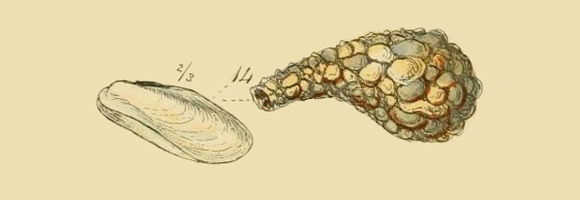
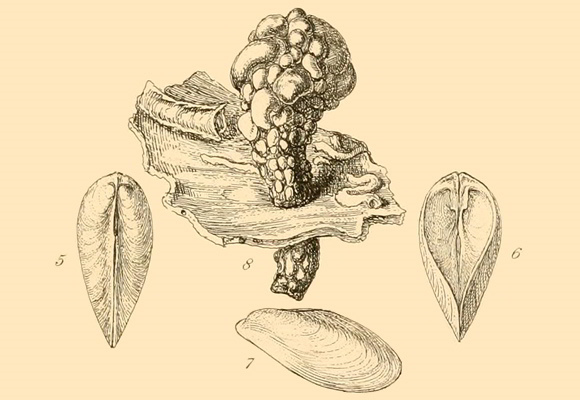
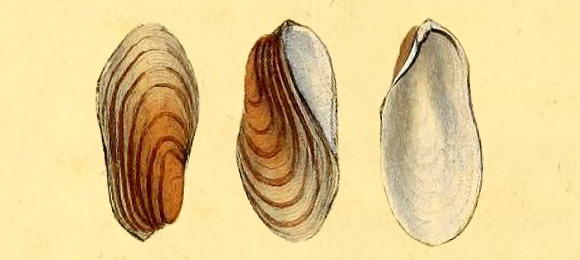
« Pennant, who seems to be the only author that describes this shell, says it has the rudiment of a tooth within one shell; with an oval and large hiatus opposite the hinge. Shells brown and brittle, size of a Pistachia nut. Length of a Horsebean, and found near Weymouth. This shell is rare… »
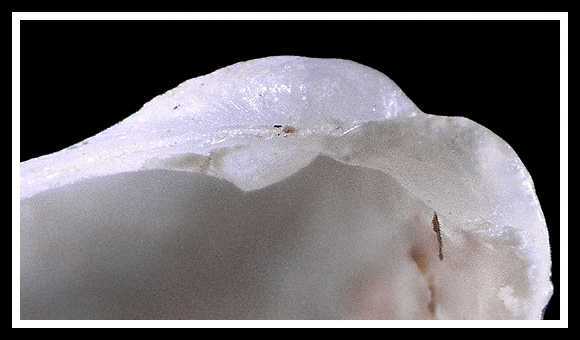
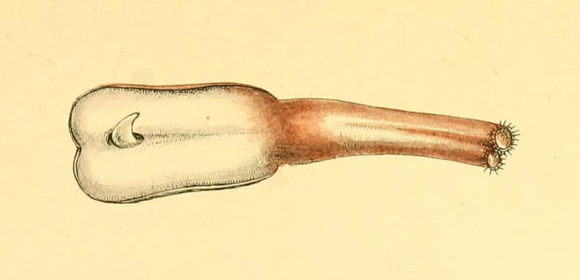
« The body is claviform, broad anteriorly, tapering posteriorly, the siphonal tube capable of considerable extension. The mantle is entirely closed, with the exception of a small aperture in front, for the passage of the small finger-shaped pointed foot, which has a byssal groove at its base. » – Forbes & Hanley: op. cit. vol. I, p.134-135.
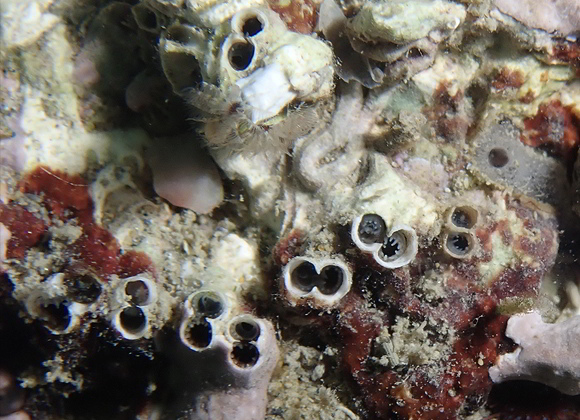
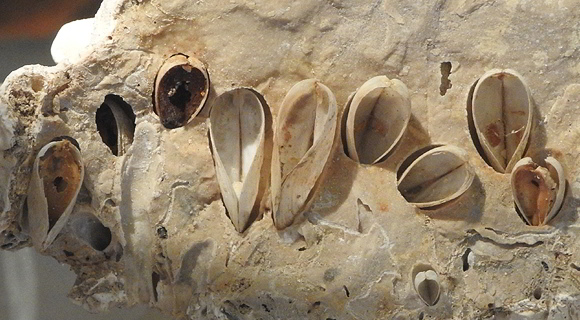
Musée des coquilllages (Association SOS Grand Bleu), Saint-Jean-Cap-Ferrat, Alpes-Maritimes, SE. France.
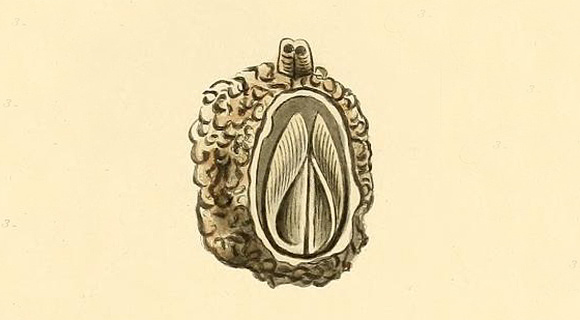
S. Clessin: “Die Familie Gastrochaenidae”, Systematisches Conchylien-Cabinet Bd.11:Abt.4a, Nürnberg 1895, plate II.
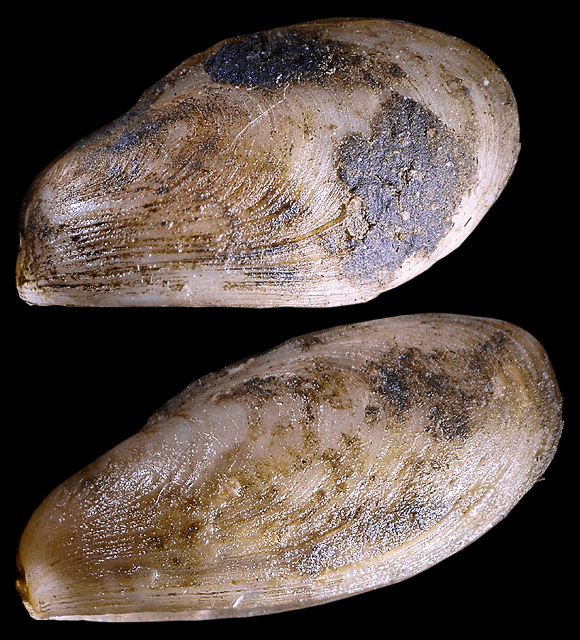
30m deep, Poetto, Cagliari, S. Sardinia. 14,5-15mm.
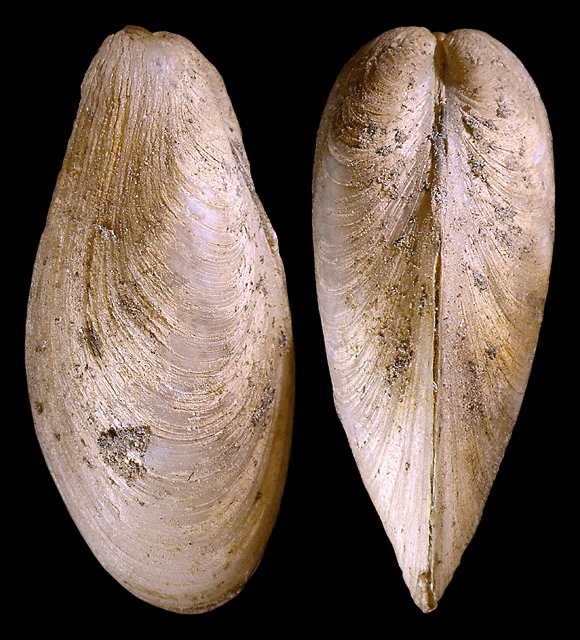
The species can nest not only in various rocky substrates but also in rapidly growing Bivalves such as Ostrea edulis or Pinna nobilis, in the colonies of the coralline alga Lithophyllum stictiforme, the yellow coral Leptopsammia pruvoti and the white coral Cladocora caespitosa; also, but more rarely, in slow-growing thick Bivalves such as Venus verrucosa and Glycymeris nummaria (DORIS).
